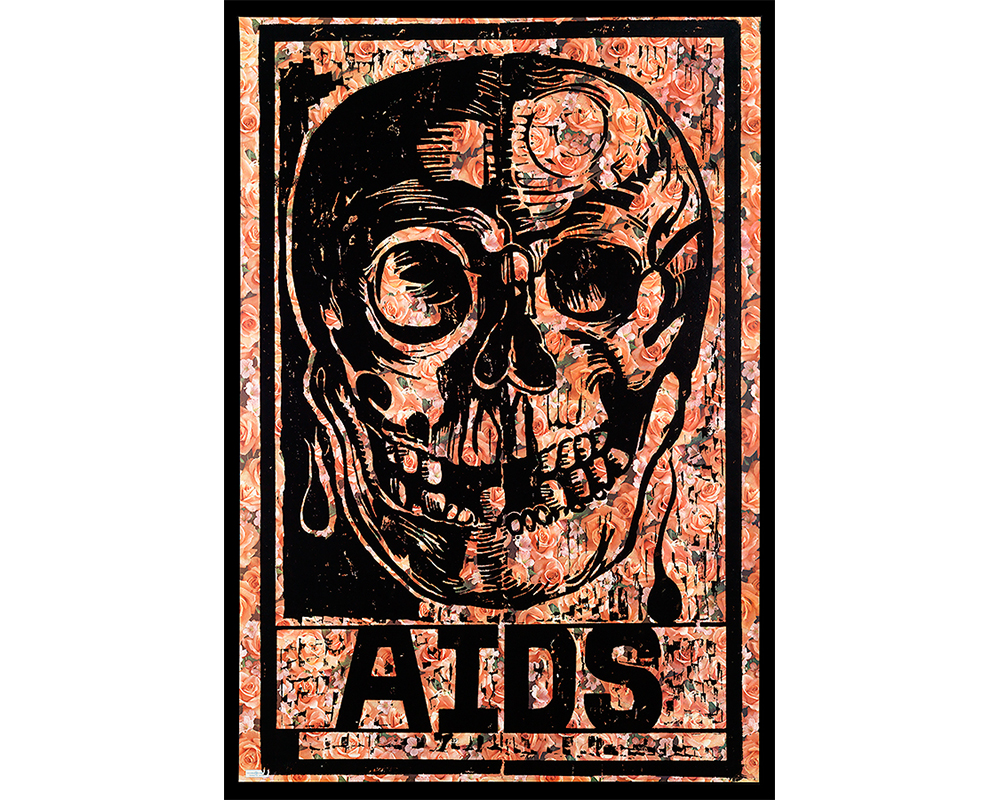
Eric Avery
Aprile Gallant is the Senior Curator of Prints, Drawings, and Photographs at SCMA.
I first became aware of Eric Avery’s work through curator/collector David Becker. Avery is an accomplished graphic artist as well as physician (who retired from active practice in 2012), who has created a wide- ranging body of work, including prints, artist’s books, sculpture, and installations, on the subject of public health and infectious diseases. As a print collector and queer activist, David was particularly interested in Eric’s graphics related to HIV/AIDS. AIDS 1984, a striking woodcut which David donated to the Bowdoin College Museum of Art in 1994, was my introduction to Avery’s powerful and personal take on the subject.
In 1984, as the death toll from AIDS rose, Avery created this image inspired by a 16th century woodcut plague poster in the collection of the Philadelphia Museum of Art. He did not cut or print the block until 1990. One edition of the image was printed on a cheap rose-printed Mexican wrapping paper that fades easily; an apt metaphor for the fleeting nature of life (image above).
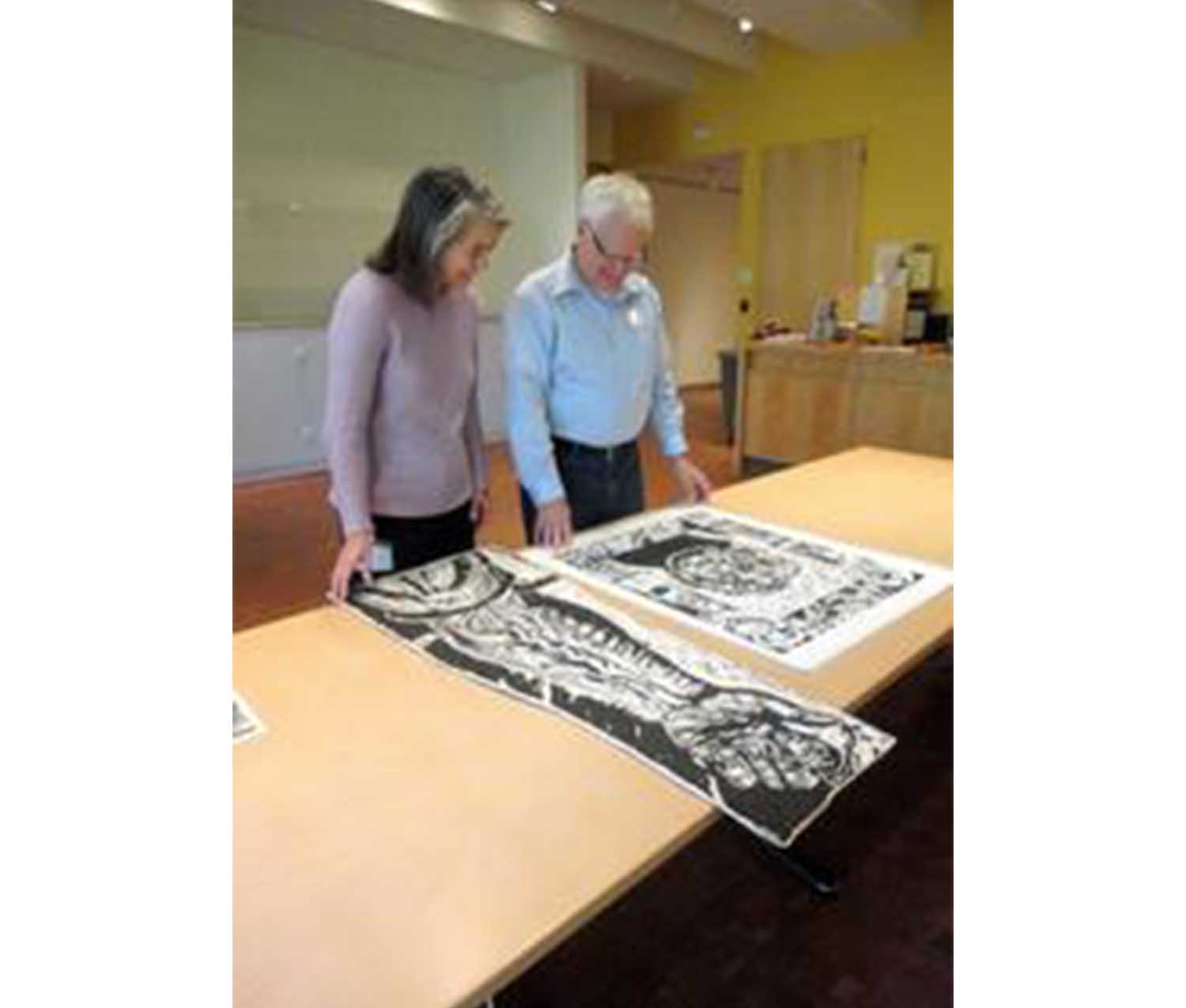
Eric Avery shows his prints Blood Test (1985) and Four Forms of Childhood Abuse (2008) to curator Aprile Gallant
When the Bowdoin College Museum of Art staged an exhibition of David’s extraordinary bequest in the fall of 2012, I was invited to speak on some aspect of his collection at a weekend symposium. I was delighted to see AIDS 1984 on the checklist, and even happier to be able to meet Eric at the event.
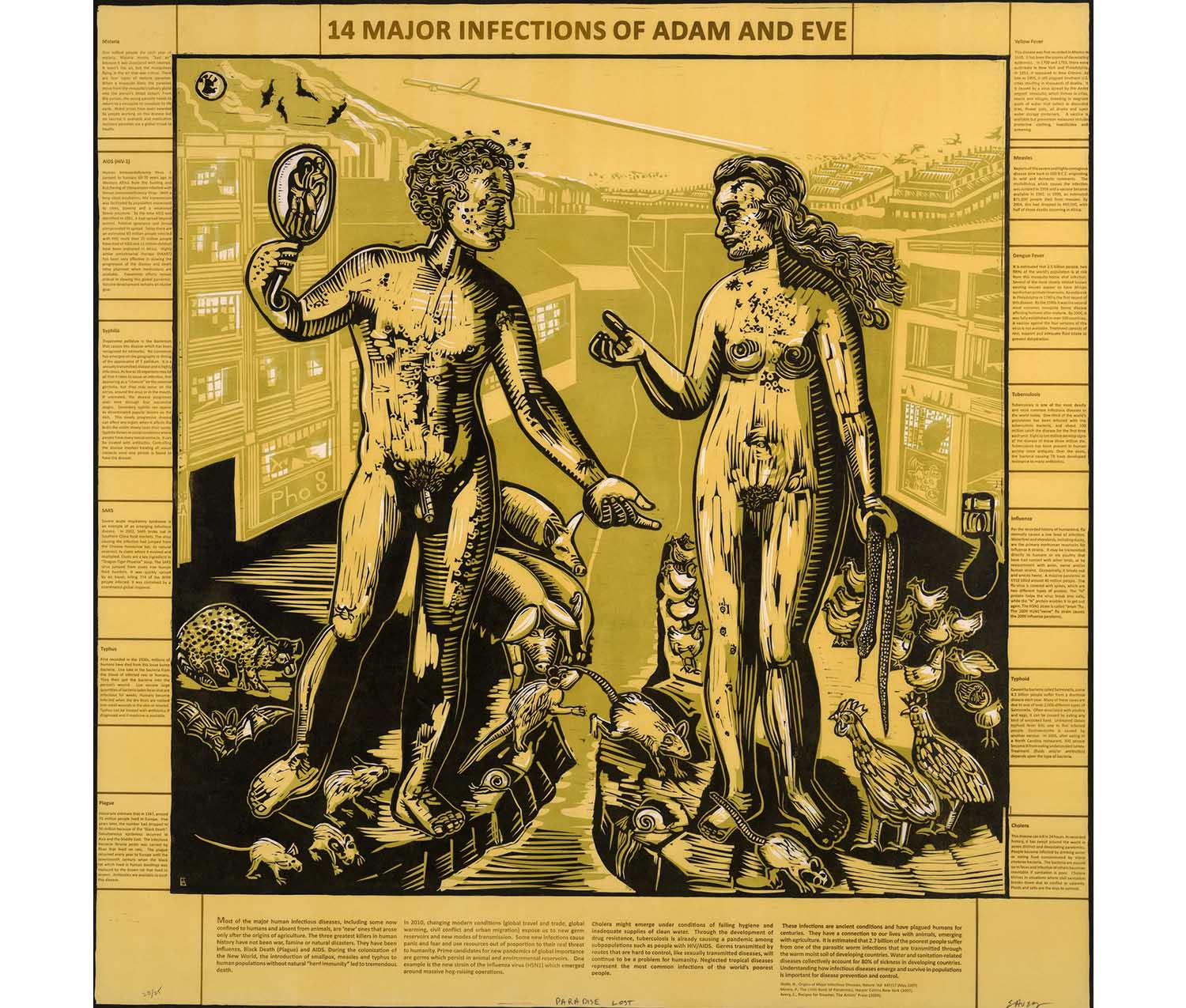
Eric Avery. American, born 1948. Paradise Lost, 2011. Linocut printed in three colors on Okawara paper with polymer plate text printed in brown. Purchased through the efforts of students in the class “Collecting 101,” January 2012. SC 2012.14.
Coincidentally, Avery’s print Paradise Lost (2011) had recently been selected for purchase as part of the SCMA-led course “Collecting 101” held in January 2012. This 2-credit class allowed students to directly participate in researching and purchasing a work on paper for the collection. The students were drawn to Avery’s work for its melding of art historical imagery with didactic information on public health, listing the infectious diseases brought about by humankind’s interactions with animals, including HIV/AIDS.
Recognizing the wide ranging interdisciplinary use of these works, SCMA and the Mortimer Rare Book Room banded together to became the first collections to acquire a full set of Avery’s prints and artist’s books on the subject of HIV/AIDS. The collection includes 27 printed works (some multi-panel) and 8 artist’s books.
As work that investigates and bridges science and the humanities, the Avery collection presents rich opportunities for use by classes and especially for interdisciplinary teaching. The AIDS crisis is a prime example of a historical force that raised crucial issues related to a key civil liberty: the maintenance of public health and access to health care. It is also an issue that mobilized a broad range of activist artists, including Eric Avery.
Avery received a Bachelor’s of Arts from the University of Arizona (1970) and an M.D. from The University of Texas, Galveston (1974). After a residency at Columbia Presbyterian Hospital in New York City, Dr. Avery was a physician for World Vision, working with refugees in Indonesia and Somalia from 1978-1980. While serving as Medical Director of the La Dhure Refugee Camp in Somalia, he began to make art that drew directly on his experiences with disease and issues of public health.
Avery returned to the U.S. at exactly the time that the first case of AIDS in the U.S. was recognized and reported to the Center for Disease Control. Over the next three years, the disease was increasingly reported among the homosexual population, and sickness and death rose precipitously in the gay community. As an artist, physician, and gay man, Avery was at the center both personally and professionally. In contrast with artists such as David Wojnarowicz or Gran Fury, whose artwork took a more aggressive and propagandistic slant, Avery’s approach straddles the lines between the personal, the clinical, and the aesthetic.
Suffering from exhaustion, Avery did not practice medicine between 1980 and 1992, choosing instead to volunteer as a refugee coordinator for Amnesty International and create artwork centered on the experiences of refugees at the Mexican/Texas border. The artworks he created on the subject of AIDS during this time period focused on his personal experience with the disease: the first work,Blood Test(1985), a powerful, over life-sized cast paper woodcut of the artist’s arm, was executed during the two-week waiting period after his first HIV test, during the same year the first HIV antibody tests were made available.
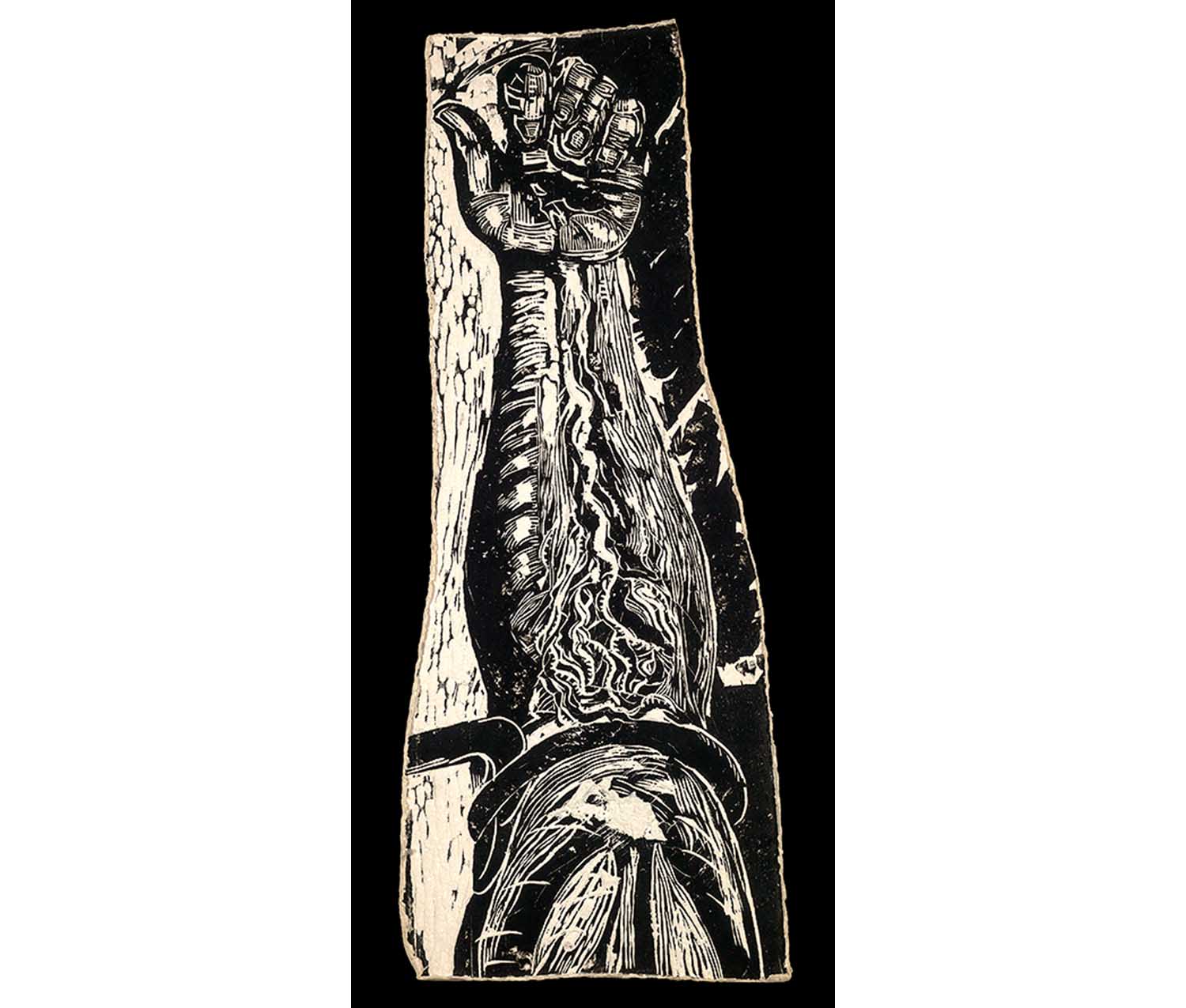
Eric Avery. American, born 1948. Blood Test, 1985. Molded paper woodcut printed in black. Purchased with the gift of Sue Reed, class of 1958. SC 2014.3.3.
In 1992, Avery returned to medicine, joining the Psychiatry Department and the Institute for Medical Humanities at the University of Texas Medical Branch in Galveston. Avery worked primarily with AIDS patients and transgendered people, in addition to creating art projects that engaged issues related to AIDS and to public health more broadly.
One of the most innovative parts of Avery’s practice was a series of Art/Medicine events staged during the 1990s. In 1994 he created an immersive installation,The Stuff of Life,at the Mary Ryan Gallery in New York. Surrounded by printed wall paper based on the artist’s own blood smear and hung with cast paper representations of the HIV virus, Avery and other doctors performed HIV blood tests on a number of volunteers (one of whom was David Becker).
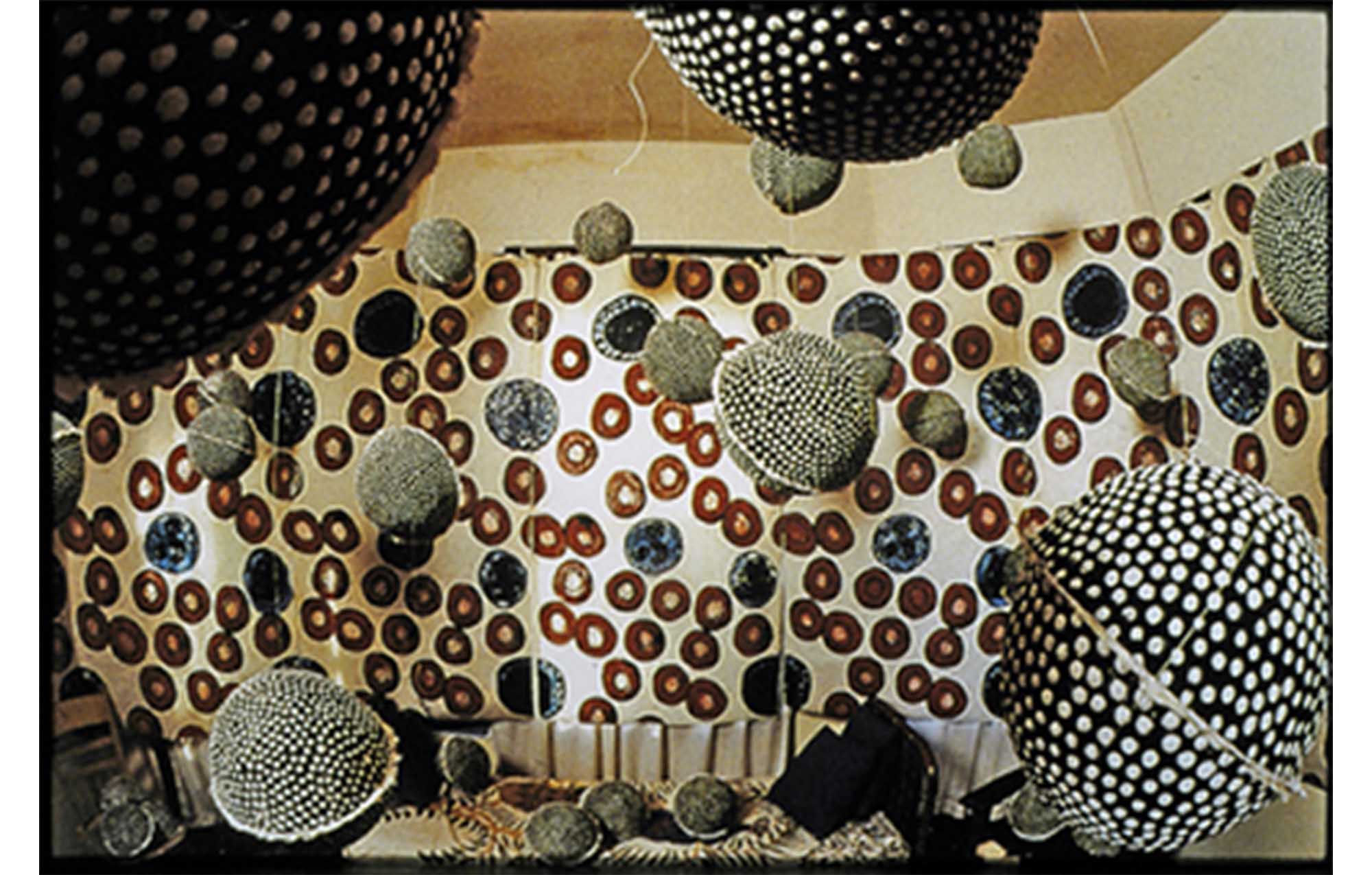
Installation view of The Stuff of Life installed in the artist's Galveston studio, 1993
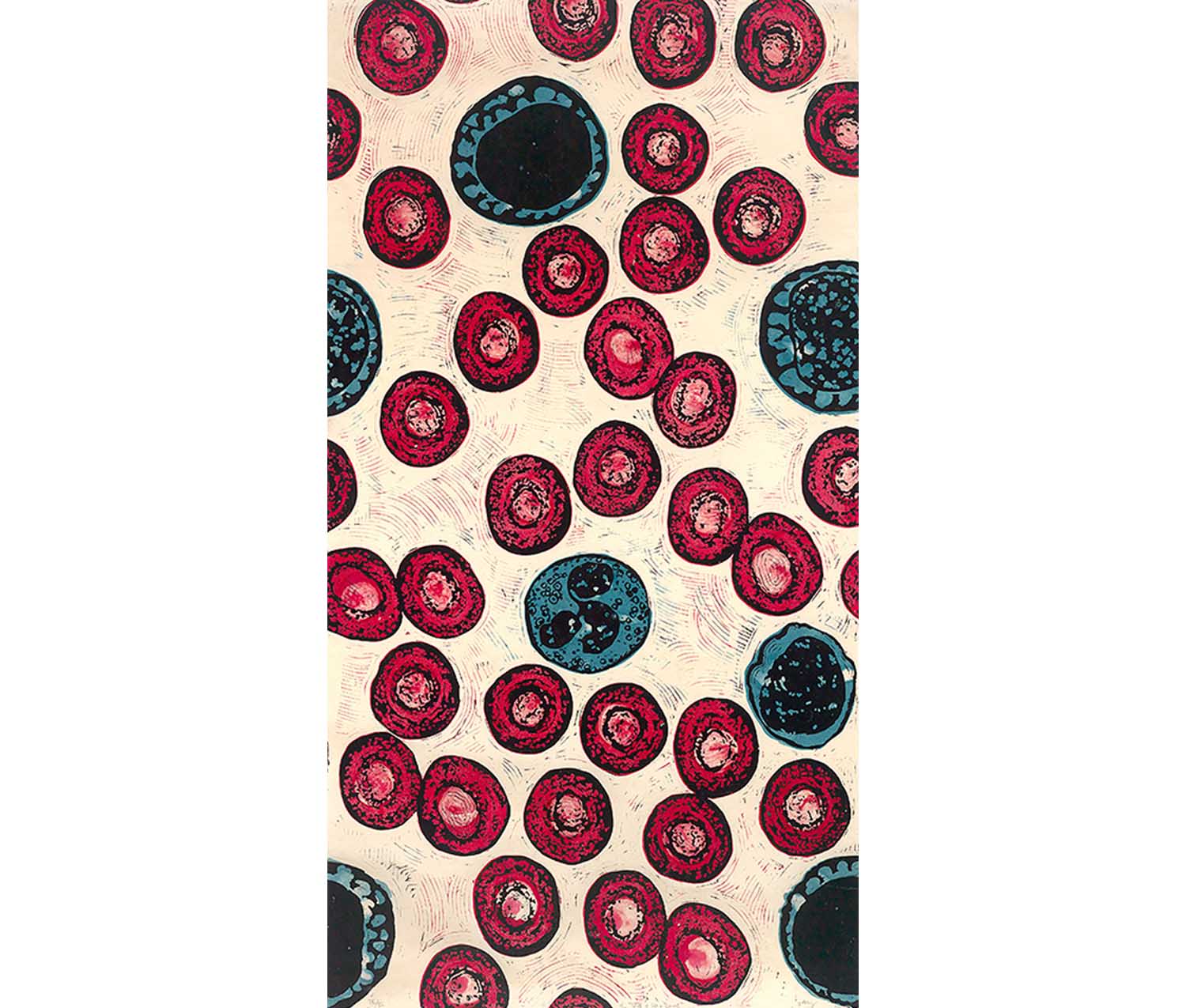
Eric Avery. American, born 1948. The Stuff of Life, 1993 (wallpaper component from installation The Stuff of Life). Linocut and monoprint printed in color on Okawara paper. Purchased. SC 2014.3.15.
In 1997, to mark World AIDS Day, a similar installation was hosted by the Fogg Art Museum, Harvard University, during which HIV+ patients received counseling and services, and additional testing was administered within a designed space within the Museum. By this time, treatment for AIDS had vastly improved, making testing and counseling even more important. Components from both of these “art actions” are included in the work acquired by SCMA.
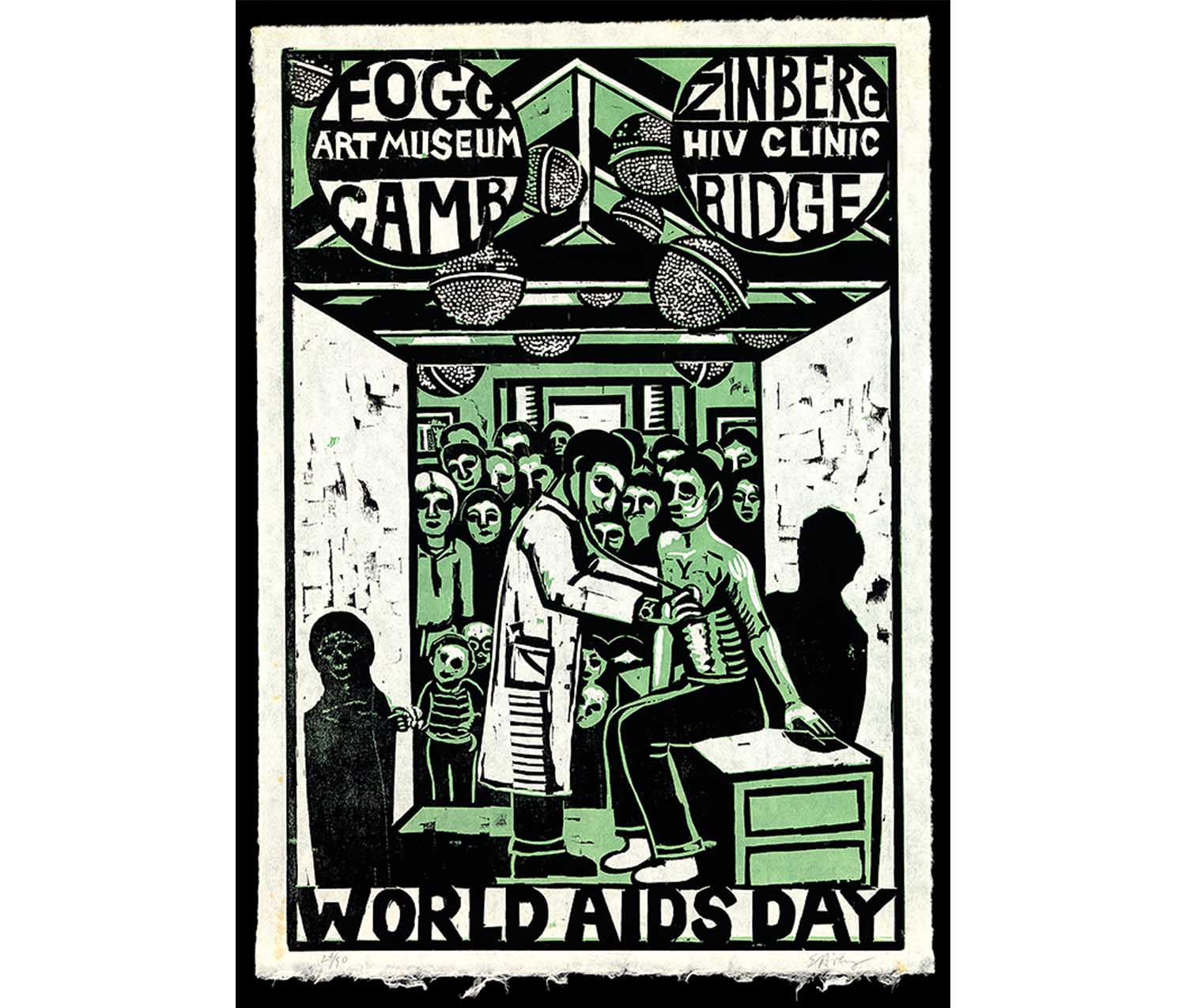
Eric Avery. American, born 1948. Fogg Exhibition Poster World AIDS Day, 1977, 1997. Woodcut printed in green and black on Mulberry paper. Purchased with the gift of Sue Reed, class of 1958. SC 2014.3.12.
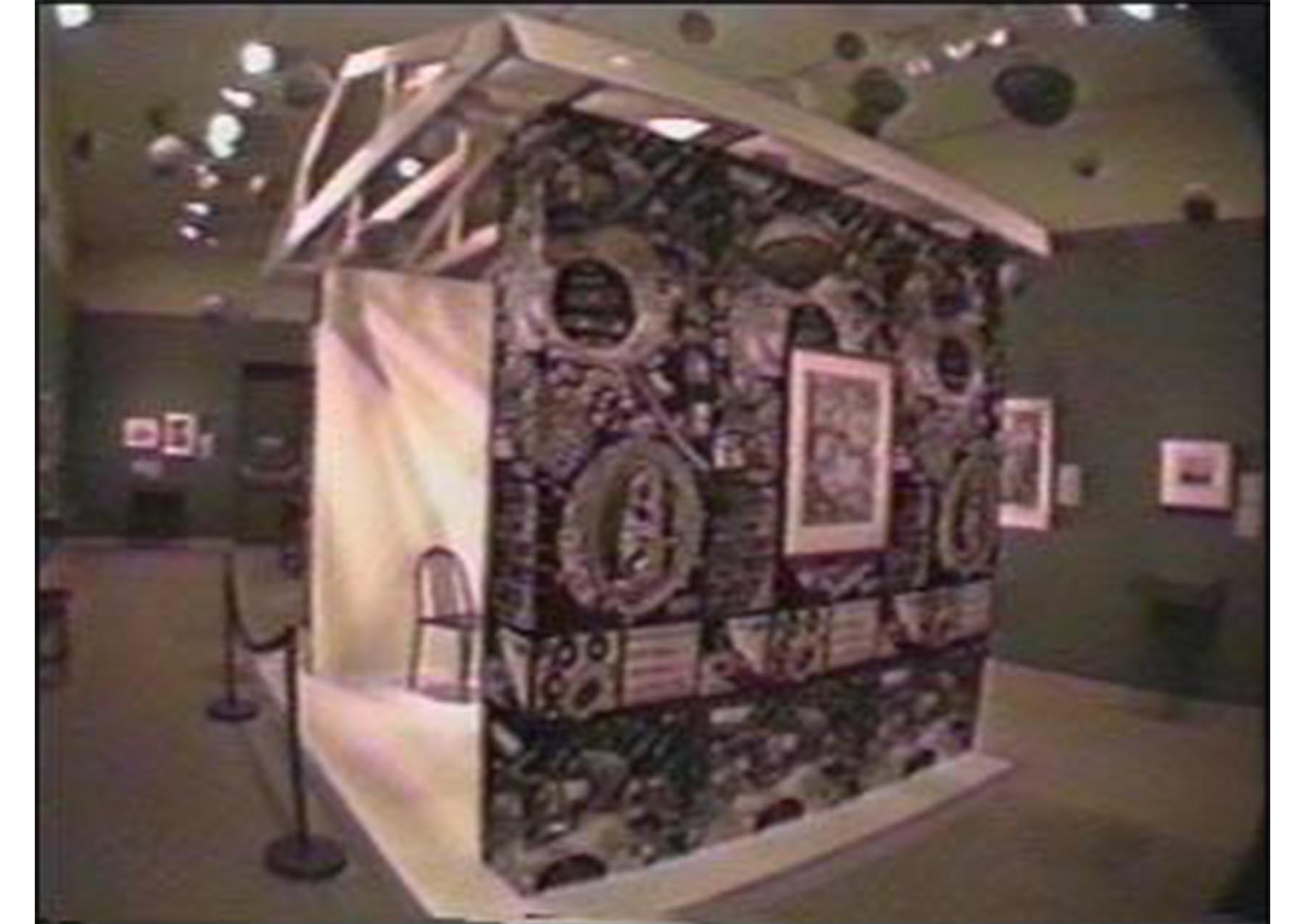
Installation view of Art as Medicine/Medicine Art, Fogg Art Museum, Harvard University, 1997
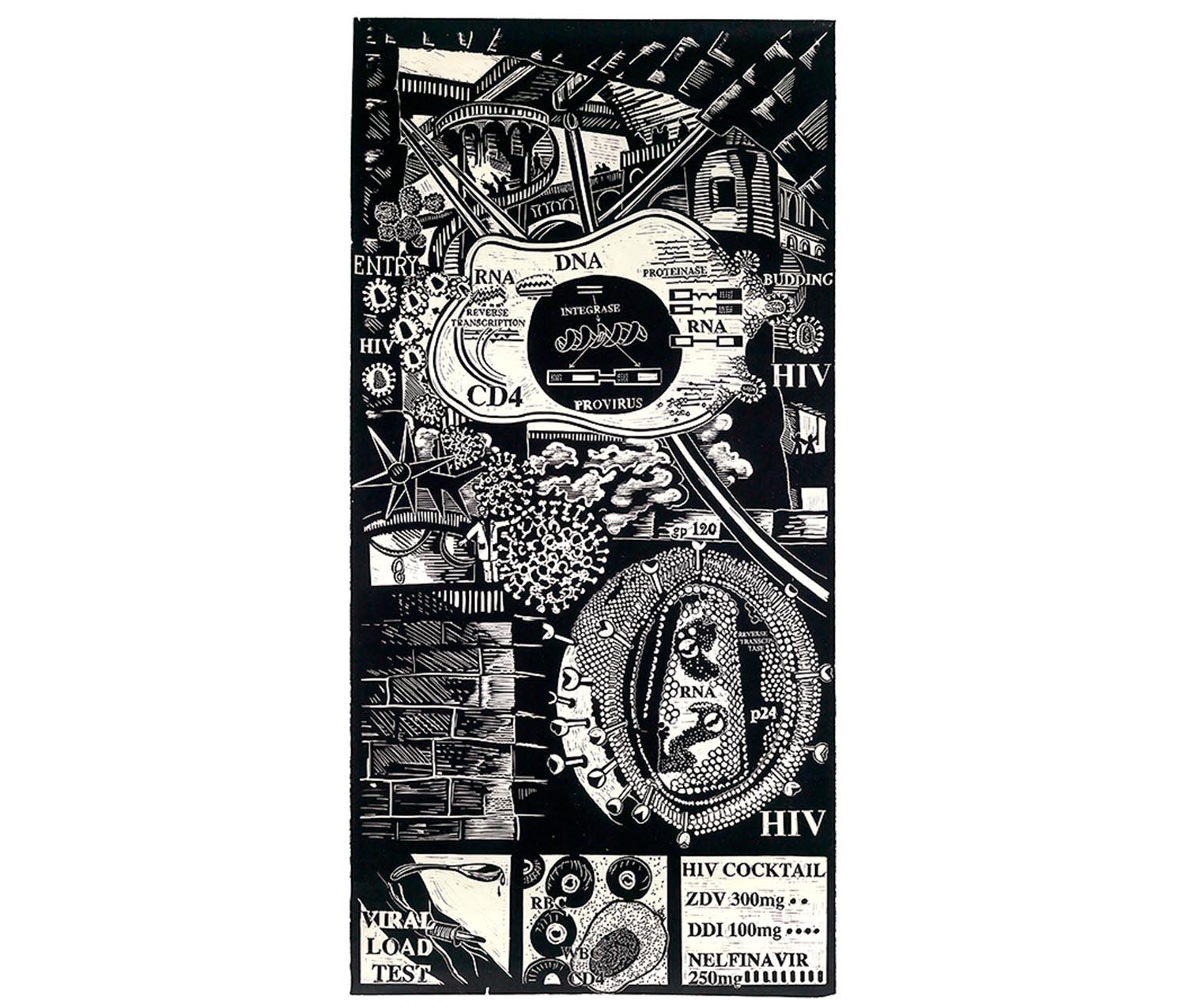
Eric Avery. American, born 1948. Lifecycle of HIV Showing Sites of Actions of Medications, 1996. Linocut printed in black on Okawara paper. Purchased. SC 2014.3.16.
SCMA is pleased to have acquired such a cohesive and important body of work that documents three decades in the life of a major public health crisis through the eyes of an artist capable of seeing, understanding, and translating the issue from multiple perspectives. An installation of the works from this purchase is planned for Fall 2015. All of these works are available for viewing in the Cunningham Center by appointment.
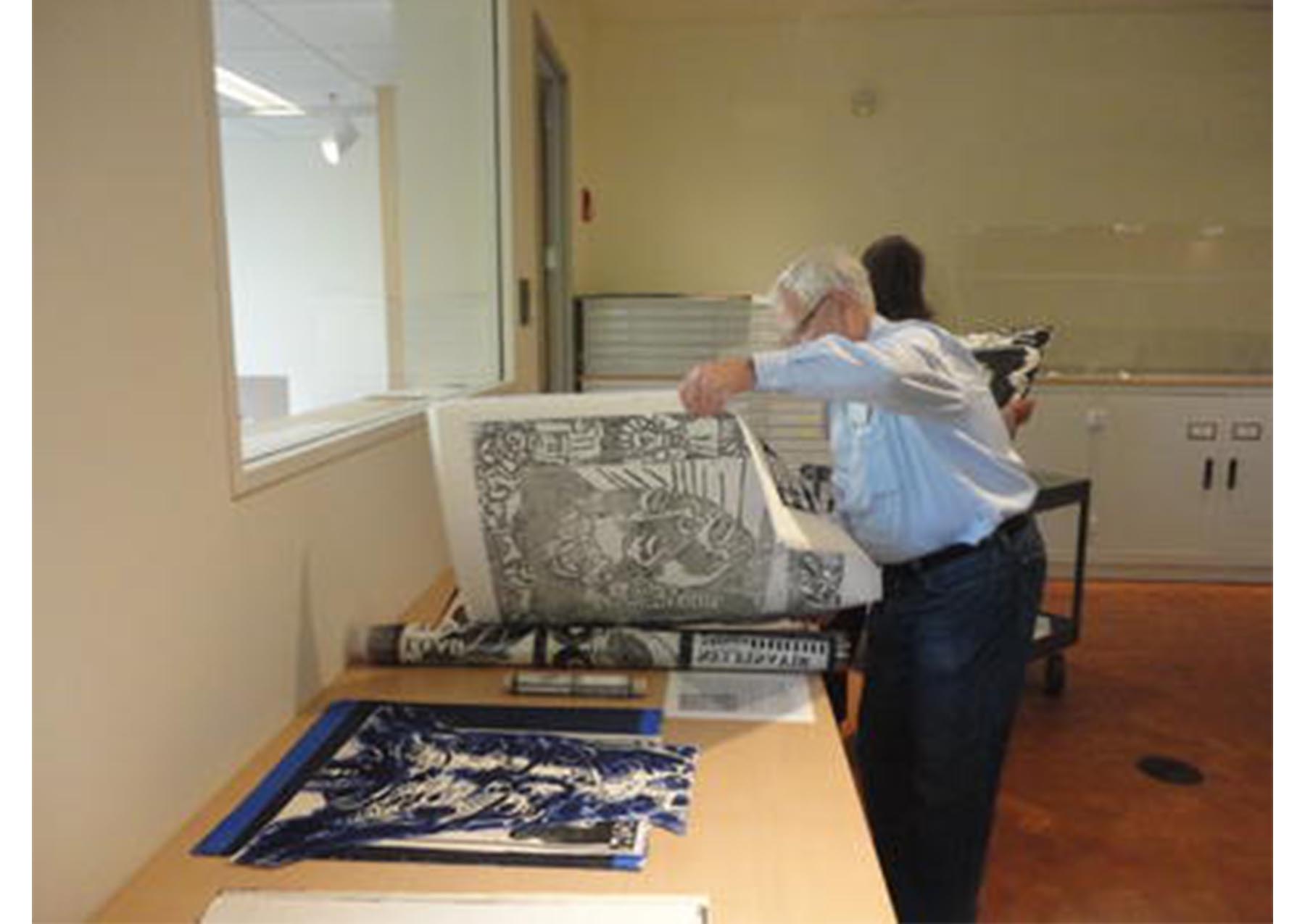
For more information on Eric Avery and his work, visit www.docart.com